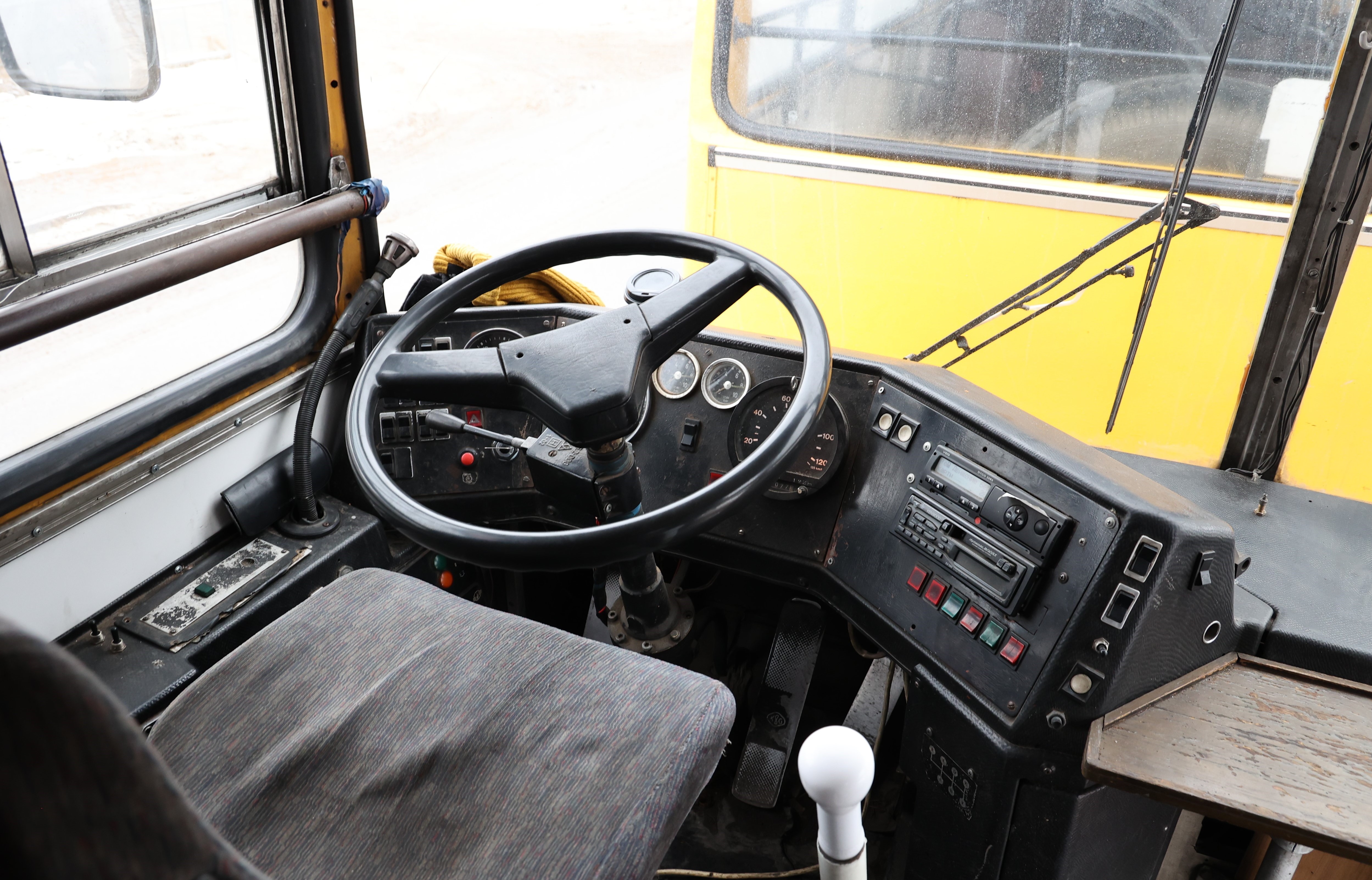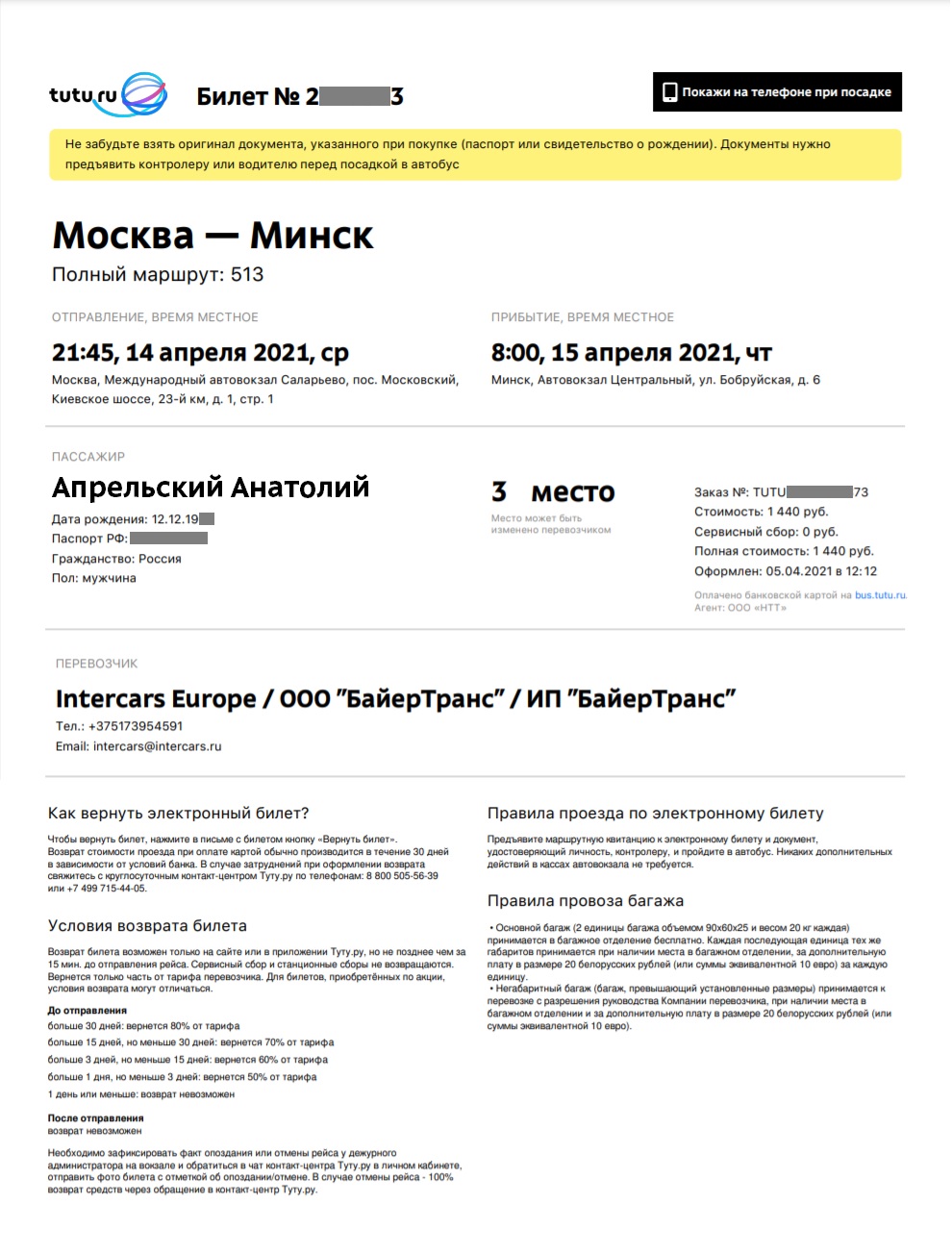
From January 1, 2021, electronic bus tickets are officially valid throughout Russia. Now I'll tell you why it is the introduction of electronic tickets at the federal level that dramatically changes the rules of the game in the bus transport ecosystem. We are one of the few organizations that first tested these principles in some kind of beta test, and then acted as industry experts for the legislature in terms of interaction with the market and passengers, which ultimately led to amendments to the rules for the transport of passengers.
This regulation is essentially similar to the cumulative service pack for the transportation rules.... Our main goal was point 30, where it was not previously explicitly indicated that an electronic ticket was possible. For example, in aviation there is a check-in procedure in which your e-ticket is exchanged for a physical itinerary receipt. On the railway there is an electronic check-in, when the details of your ticket are entered into the list of passengers, which the conductor will have. And on buses, the registration step in the regulations is simply skipped, and the ticket is at the same time an itinerary receipt at once. That is, it can be electronic, but this is exclusively at the request of the carrier and the station. Of course, there are some documents where it is said about registration even in terms of organizing a bus service, but they are difficult to implement and do not directly indicate the need for this operation.
Now you can use your e-ticket anywhere on buses by simply showing it from your phone. In theory. Because - now I will tell you how things are with the execution in the field.
This changes the whole scheme of ticket sales, since the second side of an electronic ticket is the ability to buy it from anywhere in the country. And this is somewhat unusual for the market, where historically bus station tickets are sold only at the bus station ticket office, and a return ticket is more the exception than the rule.
Why an e-ticket was needed at all
According to our surveys, 12% of passengers did not buy a ticket in advance because there is nowhere to print it. And 9% of those who bought suddenly face the same problem, including the lack of printers at the train stations themselves. That is, even if the station is ready to sell tickets online (which does not always happen), then the document must be printed.

A printout at the station is either (most often) absent, or it costs 15–25 rubles as a separate service with a queue. The third option is where the process is more or less user-friendly, it is enough to show the passport, and the passenger will be checked against the data of the bus station according to the list for a specific route.
Several years ago, a group of enterprising citizens from the most progressive bus stations, carriers and aggregators gathered in order to try to organize the online ticket sale correctly. That's right - this is without printouts, with the possibility of introducing discounts for early booking, and so on. Then we agreed that we would give an additional amount of advertising to those who sell electronic tickets, and, accordingly, stations and carriers accept these tickets without requiring a paper copy. In any case, the market needed it, because, you know, well, it's just progress. It is strange not to support an electronic ticket in the twenty-first century: the only question was when to start doing it. Someone made turnstiles with barcodes, someone just worked correctly with the lists of passengers. In general, this system worked for more than a year, until it became clearwhat problems can be and how to solve them. You can call this an extended beta.
With the results of this beta, the initiative group went to the legislature to propose to introduce "patches" into the rules of transportation. Let me remind you that at that time there was no single standard for electronic itinerary receipts and some kind of control system. And this, in the long term, threatened to further fragmentation of the already fragmented bus market.
The bugs were caught by the sea. Somewhere the staff of the bus station in the village did not understand why the receipt (even a printed one!) Was different in appearance, and did not let the person on the bus. Somewhere carriers sometimes refused to board the bus without a printed ticket: that is, the passenger successfully passes the bus station controller, but runs into the driver, who requires paper. In a number of large bus stations, they faced a huge number of cases of fraud: when purchasing online, a passenger goes to the platform and returns the ticket online before departure. The lists are already in the hands of the controller, this information does not get there, and the passenger travels along the route with the money returned. As a rule, this is solved by a ban on online returns half an hour before the departure of the bus - in this case, you can only return through the cashier.
What has changed since January 1?
The decree says: from January 1, a passenger with an electronic ticket must be allowed in. We and other members of the initiative group phoned the stations and asked: is it possible without a printout now? Someone confirmed, someone introduced it a long time ago, and someone did not even think to correspond to it.
The advent of e-ticketing has led carriers to demand that bus stations sell their tickets online, thus increasing the load on buses. And this requires automation for the station, working with APIs and other IT complexities that the station does not need and is difficult to implement in the current realities. In the bus market with a low entry threshold in remote regions, this is a big problem - after all, it is both costs and, in general, a new area of work with IT for many.
On the other hand, online sales mean that carriers get another point of growth for their sales. For example, now it is not always possible to buy a return bus ticket at the starting point: only if information exchange is established at two stations. Considering hundreds of different interfaces and at least four large automation systems, there is a very non-zero chance that you will not buy it. That is, in many situations, you still have to stamp your feet at the station, and in a bunch of cases - buy right before the trip from another region. Now bus stations manage the distribution of tickets, and they do not always have the opportunity to unload them somewhere other than their ticket office, even if they have their own websites. With online tickets, sales will be much wider anyway.